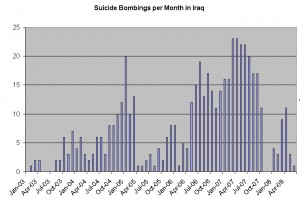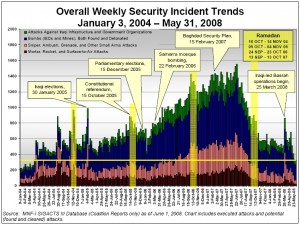Baseball is a wonderful sport. Field of Dreams is among the best movies ever made. There is a correlation between life on the diamond and life in the real world; there are many parallels. But among the best plays ever, which happens on very rare occasions, is the triple play. As a teen, I was able to experience it only a couple of times during summer league. In the real world lately, it seems as though we are on the verge of a big time triple play. Only this is not a game.
I thought it fitting this week to call this article “Triple Play.” It’s been a busy three days around here. Just so all of you know what I’m talking about, my son and his wife became the parents of three boys on Monday the 23rd. That’s right, triplets. Jesse, Jacob and James arrived between 1018 hrs and 1022 hrs on Monday morning. They came early, but it was expected that would happen. My son, the US Army Helicopter pilot and his wife are rather beside themselves at what now is a daunting task ahead of them. But with much care, assistance from family, and lots of prayer, all will be fine. It is just a long road ahead that will be traveled one step at a time.
In other news this week….the Bush administration seemed to have upped the tempo a bit about going for its own triple play. As things heat up continually in Afghanistan, most recently due to the blazing jail house attack that freed 1100 or so “bad guys” including around 400 Taliban fighters, lots of attention has been in that direction by the media. And, just as Iraq is being reported to sustain immense security improvements in the past year, and definitely such is the case, only last night more casualties were reported with the loss of three US Army soldiers in Mosul by IED. And still yet, another report this week told of meetings between US and Israeli officials who were said to have discussed the option of attacking Iran. Israel has recently been doing high profile maneuvers and letting the word out that it has no intention of letting Iran have nuclear capabilities. US officials are said to have been urging restraint on Israel’s part, however most observers have concluded that joint planning for such an attack is already in the works. And there you have it folks, out at first, out at second, and perhaps out at third. We’ll see.
But for the record, my job as a catcher was to cover home plate, no matter what the consequences. What I enjoyed most about being a catcher on the field was that I had to know every possible scenario for each and every pitch that was thrown to the batter. I had to know it before it was thrown, and be prepared for whatever transpired. As I mentioned earlier, there are many parallels between baseball and real life. And herein lies the point of this writing.
I’ve never forgotten about how it was that we went into Afghanistan back in 2001, which seems like a life-time ago. It was the first time as a father I experienced having my own son sent to war. It was only a couple of months after having just lost our oldest son, a Marine. Things were still very raw. Then, in 2003, the nation saw fit to go back into Iraq and finish something that had twelve years earlier been incomplete. It was the second time as a father I saw my son off to war. And now, it’s mid 2008, and I look towards the horizon and see storm clouds brewing once again, only the target is Iran. I know once again, should the commander in chief tell my son to “saddle up,” my son would be ready in a heartbeat for his fifth deployment in the past seven years, only this time, the next generation on deck, would be awaiting his return.
It is a very difficult play, the triple play, but it can be pulled off, but not without perfect coordination and excellent timing. And remember, it is very rarely pulled off successfully, something akin to triplet boys being born naturally without using any artificial measures.
Covering home plate, the catcher must be willing to hold onto the ball and never drop it, even when some opponent is barreling around third racing to plow into the catcher as he awaits the throw from his teammates to tag the runner out before he scores. Never let the opponent score and the last line of defense is the one covering home plate. Such is the case in this global triple play that is possibly about to take place. There were lots of errors leading up to the events of 9/11. After the disaster of the twin towers, we as a nation, and rightly so, embarked upon an “easy out” on first. Come to find out, the cave dwellers weren’t so stupid as we suspected, errors were made at Tora Bora, and just when we thought the bottom of the ninth was going to end the game, we’ve all been witness to many extra innings.
There were severe errors made leading up to the invasion of Iraq in 2003, at least that is what many believe these days in 2008. Then, once again, when we all thought the bottom of the 9th was in view, like the banner telling us, “Mission Accomplished,” it became clear that it had gone into extra innings. That brings us to today.
I remember living in Australia for a few years when my kids were little. They learned the sports games down under, which I never could actually figure out completely. The closest thing to baseball was cricket. What I couldn’t stand about cricket was the fact that the game took an unbelievable amount of time to play, sometimes days, just for one game. It made no sense to me. I think I can speak for the rest of the fans covering home plate across the nation when I say, “if we’re going to another game, I hope it does not go into extra innings.”
A good catcher hones his skills by learning from all the errors made in previous games. I figure that’s one reason there’s 162 games in a professional baseball season. There is a real possibility that Iran has pushed the envelope too damn far. In many respects, I feel they’ve crossed the line way more than once. I don’t want to see extra innings anymore. I love having triplet grandsons now. And I always liked being a part of a successful triple play as a young baseball player. But if we go to war directly with Iran, even though we’ve already been fighting them in the streets of Iraq for many years, those in charge, all the way up the chain of command, better execute it perfectly this time, for if they don’t, there just may not be a next season. I for one will cover home plate with my entire body, soul and spirit, whatever betides.
Jim Spiri
Jimspiri@yahoo.com







